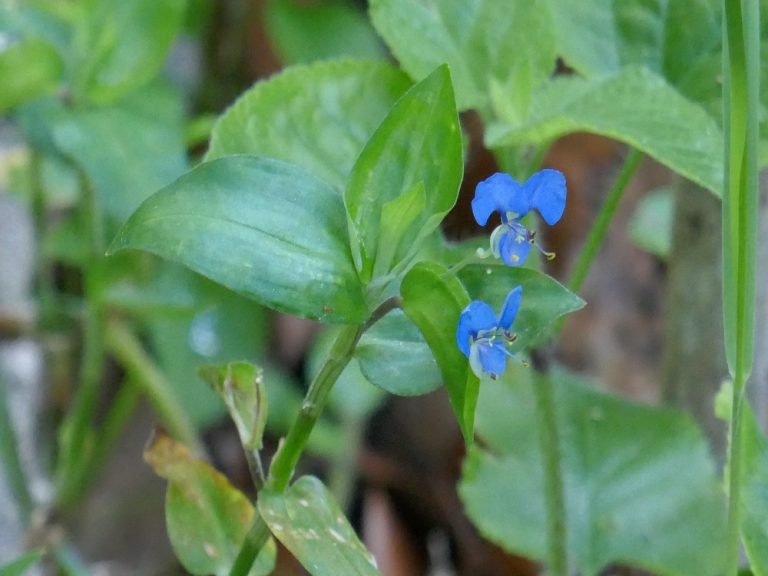
Commelina erecta
(Whitemouth Dayflower)

Common Names, Latin Names, and Family
Other common names include whitemouth dayflower, slender dayflower, erect dayflower, and widow’s tears.
The Latin name is Commelina erecta.
It is in the Commelinaceae, or spiderwort, family.
Form
Whitemouth dayflower is a a perennial wildflower that grows as a groundcover and can reach 2 feet in height.

Leaves
The leaves are alternate and lanceolate or elliptic in shape with entire margins. They have a succulent appearance.

Flowers
The blue flowers appear in late winter, spring, summer and fall.

Habitat
Whitemouth dayflower grows in sandhills, scrub and disturbed sites.
Native Range
AL, AR, AZ, CO, DC, DE, FL, GA, IA, IL, IN, KS, KY, LA, MD, MI, MN, MO, MS, NC, NE, NJ, NM, NY, OK, PA, RI, SC, SD, TN, TX, VA, WI, WV, and WY.
Landscape Use
In the home landscape it grows in full sun to part shade with average to dry moisture. It tends to sprawl and form areas of a thin ground cover in dry areas. It can be kept more lush by frequent watering and occasional feedings.
The best scenario is to plant it near a water source, or wet problem area such as a drainage ditch, so that it won’t require any watering.

Wildlife Uses
The flowers are a source of nectar for many small insects.
The seeds, flowers, flower buds, and foliage is eaten by songbirds.

Propagation
Can be grown from seed, but runners can be transplanted very easily and are the best way to propagate it.
Each node on the stems roots when it comes in contact with the soil so it is very easy to find rooted pieces to transplant. Keep it well watered until it is established.